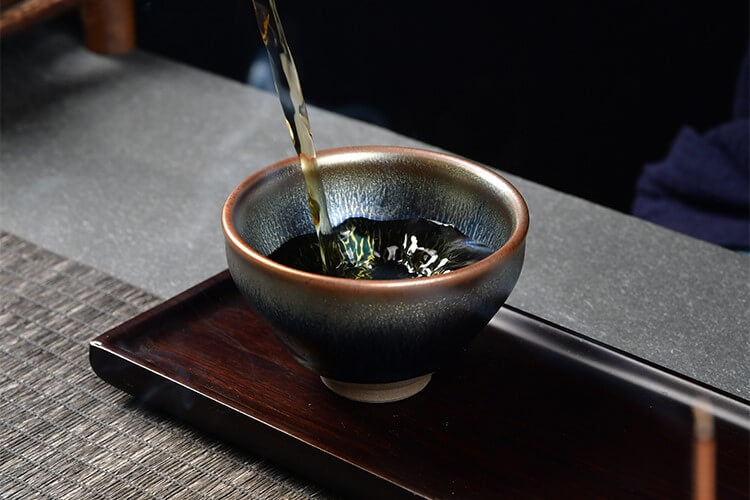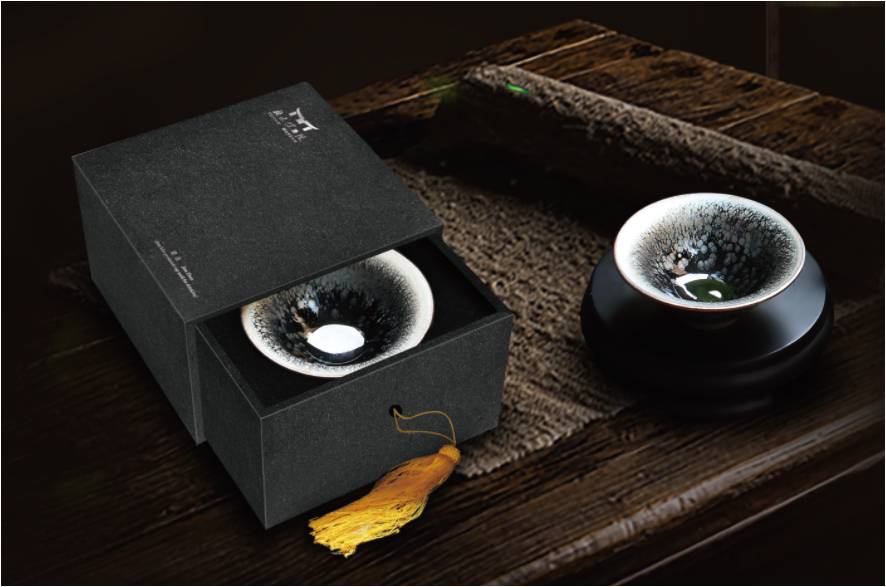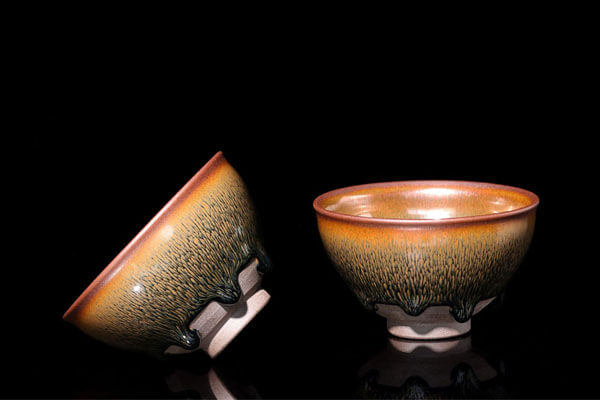Jianzhan Porcelain: One Color to Ten Thousand Hues

In the vibrant world of porcelain, countless exquisite pieces exist, yet few are so captivating that they inspire reverence when held. Among them, Jianzhan Tenmoku stands apart—a porcelain that enters the kiln with a single hue but emerges in myriad colors. Ancient scholars praised it as "One flower, one universe; one Jianzhan, a Peach Blossom Spring."
Crafted by nature, perfected by chance.
Jianzhan, a celebrated kiln-transformed ceramic, originated in the Song Dynasty and derives its name from Jian'an, its birthplace. As one of the eight renowned porcelains of the Song era, it was revered as imperial tea ware. Shaped like a bowl, it gave rise to treasured varieties such as Tianyaomo, Tuhaozhan, and Zheguban.
Typically wide-mouthed and narrow-based, Jianzhan features a funnel-like silhouette—sturdy, thick-bodied, and glazed in mesmerizing, ever-shifting kiln-born hues. This uniqueness elevated it above other porcelains, making it a prized possession among royalty, scholars, and elites.
Unlike conventional porcelain, where mastery of form, glaze, and design yields artistry, Jianzhan’s patterns and colors arise from the alchemy of nature and human craft, born unpredictably in the kiln.
Its glaze, rich in metallic minerals, reacts dynamically to high temperatures. Variations in composition, kiln placement, and heat produce entirely distinct patterns and tones. Thus, each tenmoku Jianzhan is singular—a one-of-a-kind masterpiece.
A sublime fusion of earth and fire, Jianzhan’s allure lies in its glaze. Yet mastering kiln transformations is so exacting that flawless pieces were exceedingly rare. In the Song Dynasty, millions were fired to yield just one or two perfect specimens.
Purple Clay for the People, Jianzhan for the Court
Historically, China never had an official kiln for Yixing purple clay teapots. Though occasionally tributed, their undecorated simplicity deemed them unfit for imperial use. So, what did the nobility drink from? The answer: Jianzhan.
Jianzhan remains the only official kiln porcelain in Chinese history created solely for tea. Its thick, iron-rich clay, studded with porous grains, retains heat and enhances tea fragrance—much like Yixing teapots—earning its place among the finest tea wares.
Moreover, its iron-laden glaze releases ions into tea, enriching the brew. Some even magnetize Jianzhan bases to soften water, adding healthful benefits. These traits cemented its status as a courtly treasure.
Born from humble clay, Jianzhan is reborn in fire—a phoenix of porcelain. Through ancient artistry, it unveils a beauty both ethereal and profound. To hold one is to wander through its kaleidoscopic patterns, as if glimpsing the boundless wonders of the universe.






